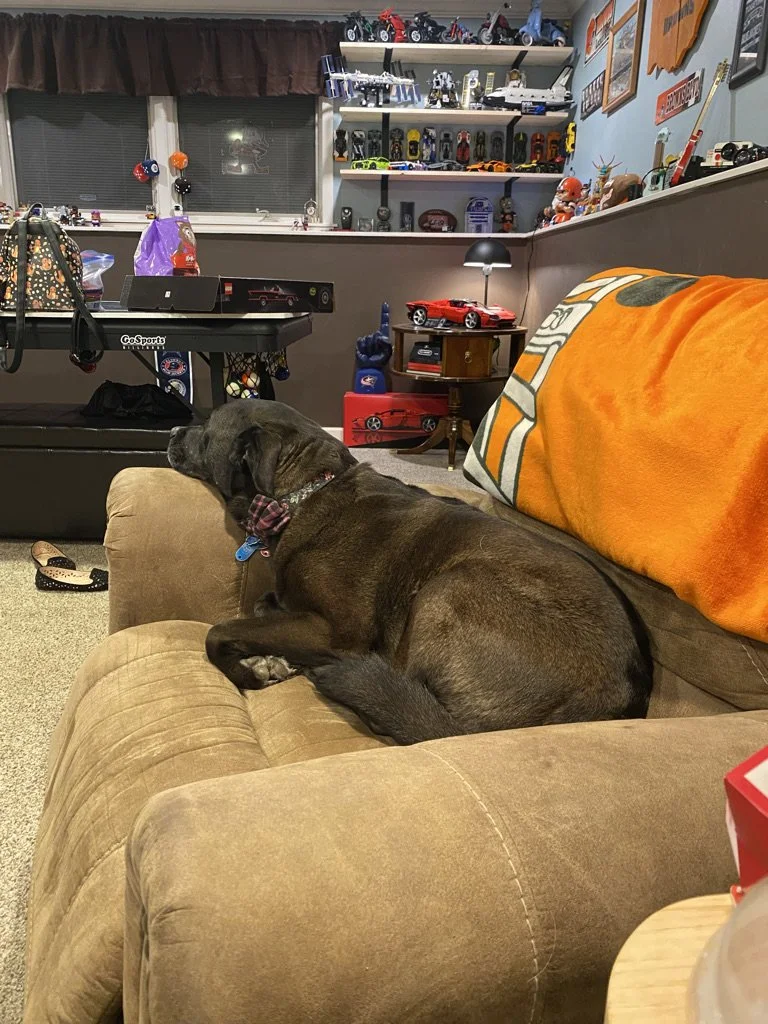Emilee Brewer
Your dog has been drinking water like crazy, eating like they’ve never had a meal in their life, and you can’t escape their panting even when they’re resting. You take them to the vet, and they tell you it’s Cushing’s. But what on earth is that? Should you be worried? Will your dog be okay? I’ll go over the symptoms, treatment, and prognosis for this disease, and hopefully I can ease some anxiety!
Cushing’s disease, or hyperadrenocorticism, is an endocrine disorder that commonly affects middle-aged to senior-aged dogs. Cushing’s happens when the body produces too much cortisol, which can cause excess thirst, excessive panting, hair loss, increased appetite, lethargy, and muscle weakness, among other symptoms. The pituitary gland, located at the base of the brain, produces adrenocorticotropic hormones (ACTH) and releases them into the bloodstream to stimulate the adrenal glands to produce even more hormones. The adrenal glands, located on top of the kidneys, produce cortisol, which helps regulate body functions and cope with stress. When everything is working correctly, the adrenal glands signal to the pituitary gland to stop producing ACTH. However, Cushing’s throws a wrench in the gears, and the adrenal glands overproduce cortisol.
According to PetMD, there are two types of Cushing’s: pituitary-dependent and adrenal-dependent. Pituitary-dependent is the more common of the two, and happens when a mass develops on the pituitary gland. This mass produces hormones that stimulate the adrenal glands. Adrenal-dependent occurs when a mass grows on the adrenal glands and produces too much cortisol. In both instances, a CT scan or MRI is needed for diagnosis to find where the mass is growing. However, Cushing’s can be diagnosed in general from blood work and a urinalysis.
There are a number of treatment options for Cushing’s disease. According to VCA, “treatment of the pituitary-induced form of Cushing’s disease is the most complicated. Trilostane (brand name Vetoryl®) is the drug most used. It works by blocking an enzyme involved in hormone synthesis. Mitotane (brand name Lysodren®) is another option. It destroys adrenal tissue and can be associated with more side effects. Selegiline hydrochloride (brand name Anipryl®), and ketoconazole (brand name Nizoral®) are other medications, although they are not considered as effective as trilostane or mitotane and are not typically recommended. Surgery to remove the pituitary tumor, or radiation therapy, may be an option at certain referral centers”. If the mass is on the adrenal glands, it does require surgery. If the mass is benign and the surgeon can remove all of it, the dog will regain their normal health. If they are unable to perform surgery, it can be managed with medication, though it’s typically not as effective as if it were pituitary-induced. Radiation is also an option to destroy the mass.
If the disease is being managed with medication, it’s important to follow your vet’s recommendations closely. Treatment is dependent on consistent administration of the medication. Lifelong medication may be necessary; however, most dogs will experience little to no side effects. It’s also important to do follow-up blood tests to ensure your pet is receiving the correct dosage.
The prognosis for a dog with Cushing’s is okay. Medication and surgery can definitely help prolong their life, but unfortunately, Cushing’s is a lifelong disease and does shorten their life expectancy. From PetMD, “the expected lifespan of a dog diagnosed with Cushing’s disease ranges from one to five years, depending on the selected treatment and how the dog responds to it”. Prognosis is better if the tumor is small or removed altogether. However, from VCA, “if the tumor is large and affects the brain, the pet has a less favorable prognosis. The prognosis for patients diagnosed with malignant adrenal tumors is guarded to poor. In cases of benign adrenal tumors, however, surgery is usually curative”. It’s really individually based, but the good news is that Cushing’s is very much manageable!
Receiving a Cushing’s diagnosis can be scary. I fully understand the fear; my parents’ dog was diagnosed, and it scared me. I love her so much, and don’t want anything to happen to her. But know that there are lots of treatment options available, and it can be managed. You still have a good amount of time left with your pup after diagnosis!



